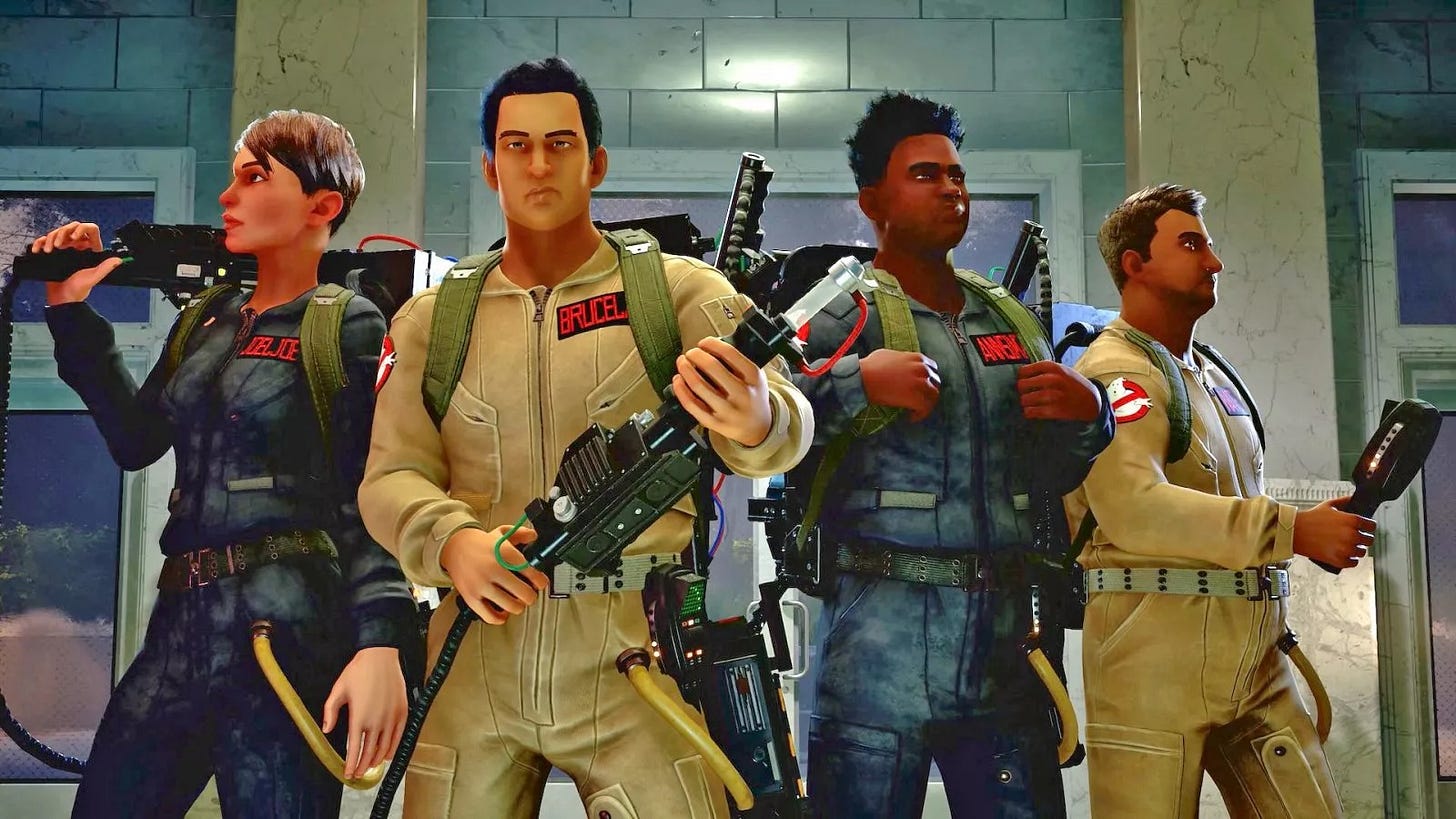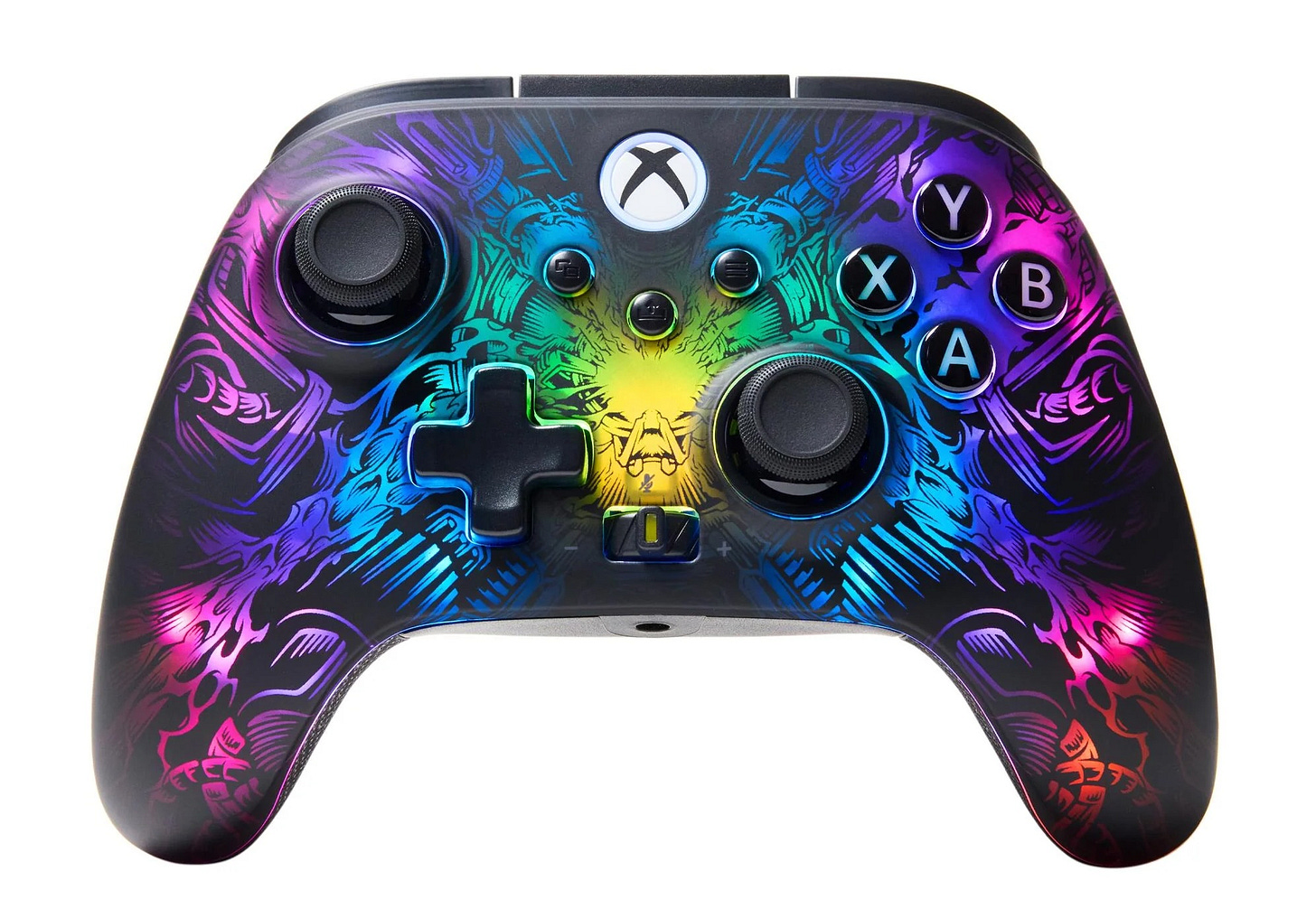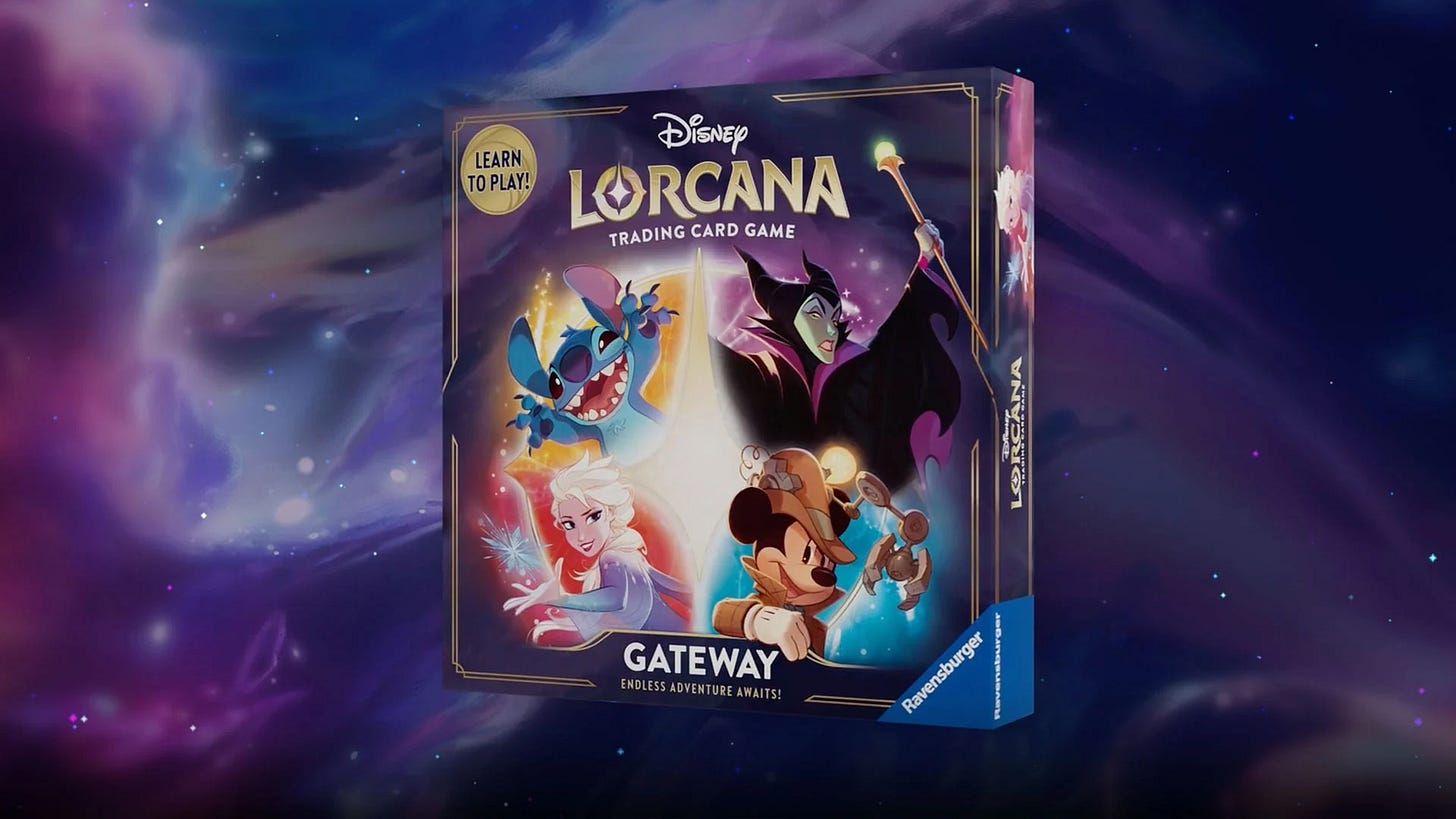The Steam Deck Is Finally Coming To Australia
Plus less expensive pro controllers, Lorcana Gateway, and Mario Kart
Welcome back, Button Buddies!
I hope you’ve all recovered from PAX. A great weekend was had by all.
This week Tim dives into why a Steam Deck might actually be worth the price tag, and reminisces about the joys of Mario Kari, while Alice tries out the new Power A Fusion Pro Wireless Controller, and gets into Disney Lorcana Gateway. Plus, of course, all the recommendations for what to play this weekend.
Enjoy!
Why Steam Deck rules for PC avoiders
By Tim
After two-and-a-half years, Valve has finally announced its Steam Deck handheld PC is coming to Australia. And what’s more, it’s coming at the reasonable, import-beating prices of $650 (LCD 256GB), $900 (OLED 512GB) and $1050 (OLED 1TB).
Even as someone who favours consoles I’ve still found the Steam Deck - with its simple verification system, powerful control customisation and Linux desktop mode - has opened up a lot of new options for me by making PC games instantly available in a Switch-like form, which I thought I’d break down here for prospective owners:
Games that are a little bit older. Some games from the 2010s are great on the latest consoles, but many others either aren’t available or haven't been updated to take advantage of the latest hardware. Where these games have a PC version, they can be ideal on Steam Deck. Examples here include Rise of the Tomb Raider, Prince of Persia the Forgotten Sands, Sega All Stars Racing and Dishonored, all of which I’ve revisited on Deck to find they run and look better than at their original console release.
Indies that skip consoles. With a few exceptions the Steam Deck is incredible for these games. When an amazing new PC indie has hit the zeitgeist, like Dave the Diver, Minishoot’ Adventures, Case of the Golden Idol, Pizza Tower and most recently UFO 50, I didn't have to play at my desk or wait to see when a console port would arrive.
First party exclusives but portable. There are heaps of AAA video games available for Steam Deck, but it feels especially remarkable to be able to take previously console exclusive games on the go. Halo the Master Chief Collection has had its issues but is currently great on Deck, while I've also played through Uncharted 4 and God of War on the machine. You do gotta buy ‘em again though.
Games that aren't on any major marketplace at all. I'm no stranger to itch.io and fan games but my resistance to playing these on my work computer means I've often had to craft some convoluted set-ups. On Steam Deck installing an indie made for Linux (or many made for Windows) and playing it the same as any other game is painless.
Steam Sales. They really are well beyond what you get on console.
What to play
It's spooky season on PlayStation Plus as the Extra catalogue gets a handful of new entries. There’s first-person zombie RPG Dead Island 2, interactive slasher film Dark Pictures Anthology: The Devil in Me, and asymmetrical multiplayer bust-em-up Ghostbusters: Spirits Unleashed. There are some less spooky options as well, including Two Point Campus, Return to Monkey Island, Ghost Recon Wildlands and beautiful platform puzzler Gris (just in time for successor Neva this week). And if you pay extra for the Deluxe catalogue you get The Last Clockwinder on PS VR2, the awesome Resident Evil like Dino Crisis from PS1, survival horror Siren from PS2 and the PS4 version of R-Type Dimensions EX.
New to Game Pass this week is the brand new narrative-focused robot combat campaign Mech Warrior 5: Clans, as well as the wonderful physics puzzle game Donut County and the surprisingly interesting strategy RPG South Park: The Fractured but Whole.
Finally, a pro controller that’s only very expensive instead of extremely
By Alice
Elite and pro controllers mean different things to different brands, but most people who have used them for a while agree on one thing: there’s no going back once you’ve played on a controller with programmable back buttons. I am not going back to a world where I have to press L3 to sprint, and you can’t make me.
The problem is that all the brands have only agreed on two things being essential for a pro controller:
Must have at least two programmable back buttons (or, even better, paddles)
It must be expensive
The Xbox Elite controller retails for $250 (though you can usually find it on sale) and the PlayStation DualSense Edge is $339. That’s why the new Power A Fusion Pro Wireless controller is an intriguing proposition at an RRP of $199.
The Power A Fusion Pro Wireless might lack the heft of the first party controllers, but it has all the important stuff: Hall effect joysticks (so they hopefully won’t get stick drift), four buttons on the back that you can program on the fly, adjustable triggers, three different heights for the joysticks, and (most importantly) it lights up with the whole rainbow in 6 different light patterns.
I’ve spent the last week playing with both the wired and wireless versions (the wired one is like the wireless version, but with a faster reaction time and no lights) and I’ve enjoyed it a lot. I think the little display stand with magnetic charger is the nicest touch, and I’m surprised the first party controllers didn’t have that idea first.
The case is as nice as the first party ones.
My only complaints are that it feels a bit light. I like the added weight of the first party elite controllers, because they feel more substantial and balanced. I also wish it had back paddles instead of buttons. I have difficulty finding the right button in a hurry, because there’s almost nothing to differentiate them by feel from the rest of the controller. Having different face plates to customise the design that lights up would also be nice, but that’s a minor quibble.
Overall, for people looking for an alternative Pro controller, the Power A Fusion Pro Wireless is an excellent choice.
Bricks, Boards and Beginnings
by Alice
The thing about trading card games is that they can be daunting to get into. You either need to be taught how to play at a convention by learn to play people, or you’d better hope that your friends who play are also good at teaching you. Many stores will also have free learn to play sessions for games like Magic the Gathering, but they’re not ubiquitous. Magic the Gathering has long had a “the first taste is free” policy, where you get a free learn to play deck along with your lesson.
Disney Lorcana’s Gateway box is the most interesting way I’ve seen a TCG tackle this first step in a long time. Disney seems to know that Disney fans will spend any amount of money on any merch the company releases, so the Lorcana learn to play box still costs money ($40, specifically), but it’s a lot more than just a starter deck.
Gateway includes two decks, a scoring board, stand up character cards for scoring, and a campaign. Players start with the most basic Lorcana cards, and then, as the player gets more confident with the game, there are packs of extra cards to be added to the deck. The campaign has four stages, prepping players for more advanced play.
It’s a neat idea to include all the tools in one box, make it fun, and then make it so those learn to play tools are useful later. If you tried to upgrade one of those old free learn to play Magic decks, you’d have to have a complete Ship of Theseus situation other than the lands. While you wouldn’t show up to a tournament with a full Gateway deck, there are still enough cards worth playing in there that you wouldn’t have to switch out every card. It’s a neat idea, and a good way for future Lorcana fans to give it a shot.
Retro Esoterica
by Tim
Mario Kart, more than any other Nintendo franchise, has always been at the forefront of exploiting new tech and features to drive stelar multiplayer experiences. Up until Mario Kart 8, which has now stuck around for more than a decade, a new entry in the franchise tended to arrive every three years or so to show off what the current Nintendo hardware could do. In this first of a two part series, we are looking back at the original three entries.
Super Mario Kart Like F-Zero before it, this was a poster child for how Nintendo's Mode 7 technology could give the impression of moving through 3D space using trickily stretching and rotating 2D assets. But this 1992 effort was designed to support two players simultaneously, either racing alongside computer controlled opponents, or facing off in battle mode. Most of the series’ core elements were here at the start, including power sliding, items and an expansive crew of racers, but all would be significantly expanded in the years ahead.
Mario Kart 64 Coming very soon after the release of Nintendo's first truly 3D capable console in 1996, this sequel used real polygons rather than trickery to render its surroundings.It's difficult to convey exactly how mind blowing the move from Super Nintendo to Nintendo 64 was, but playing the two Mario Karts back-to-back will give you a good idea. Elements like the huge jump in DK Jungle Pathway, the secret waterfall in Koopa Troopa Beach, the train in Kalamari Desert or the weird verticality in Rainbow Road sold the idea of gaming in three dimensions just as effectively as Mario 64 had months earlier. This was also the first game to put those four controller ports to good use, creating an instantly iconic party game experience.
Mario Kart Super Circuit Retrospectively you might consider this GBA entry to be the weakest in the series, but in 2001 it made Mario kart portable, with a mix of influences from the first two games and a dash of all new connectivity. As in 64 you could trade ghosts amongst your friends to provide a competitive challenge even when you were on your own, but the Link Cable also provided a way to race or battle in a group with everyone having their own screen for the first time. In Japan, the game even worked with a mobile adapter that let you upload and download ghosts over the Internet. Plus this was the first time the series dabbled with nostalgia, including all the tracks from the original game as unlockables.









